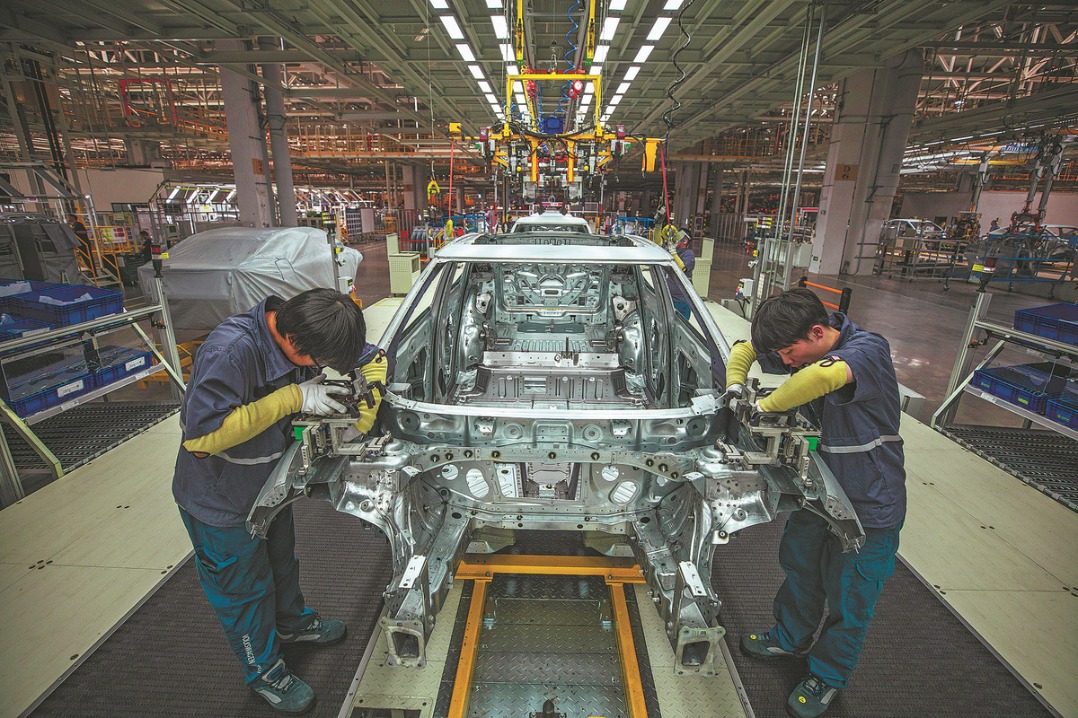Gains from the pain
Fallout from the likely implosion of Evergrande is manageable and worth bearing as it will help ensure China's future financial stability


Notwithstanding all the focus on the recent travails of Evergrande, China's second-largest property developer, the Chinese financial system is not on the brink of a dreaded "Minsky moment" that many believe could deal a crushing blow to an overly indebted Chinese economy. Evergrande, with its debt overhang of some $300 billion, is certainly in serious trouble, and seems unlikely to survive in its current form. But its problems are manageable, which is a testament to the government's proactive deleveraging campaign that should put the Chinese financial system and the real economy on sounder footing in the years ahead.
Significantly, the Evergrande crunch is not a classic "black swan" shock. Unlike the Lehman failure of 2008 and its devastating collateral damage on the US and global financial markets, the Evergrande problem has not blindsided Chinese policymakers. There were ample warnings of what to expect. In May 2016, an "authoritative person" famously sounded the alarm of the potential Japanization of an overly-indebted Chinese economy. Since then, China's policymakers and regulators have been focusing on the deleveraging imperatives of financial stability. They have been determined and methodical in their approach-initially targeting the excesses of the shadow banking sector and its associated profusion of risky wealth management products and, more recently, the excess leverage of the property sector.
This latest phase of the deleveraging campaign has been transparent and disciplined. At the start of 2021, Chinese regulators established three "redlines" for property developers-debt-to-assets, debt-to-equity and short-term debt-to-cash. As the most indebted of China's large property developers, Evergrande has been the first to fall. Yes, there have been market-induced spillovers to other property developers and to lower-grade issuers of Chinese debt. Yet far from surprising, this is precisely what a serious deleveraging campaign requires.
Significantly, the Chinese government has ample resources to backstop potential Evergrande loan defaults and ring-fence potential spillovers to other assets and markets. With some $7.5 trillion in domestic saving and another $3 trillion in foreign exchange reserves, China has more than enough financial capacity to absorb a worst-case Evergrande implosion. Large liquidity injections by the People's Bank of China in recent months underscore that point. Having learned the lessons of the global financial crisis of 2008-09, Chinese regulators are particularly mindful of the need to limit deleveraging contagion from infecting other segments of its financial system.
Even more important is likely resilience on the demand side of the Chinese property market. Chinese demand for housing has long been underpinned by the most dramatic surge of urbanization in recorded history, as the urban share of its population has gone from 19 percent in 1980 to slightly over 62 percent in 2021.Notwithstanding recent chatter over shrinking cities, strikingly reminiscent of earlier false alarms over ghost cities, this trend is likely to continue in the years ahead. Despite the slowdown in its overall population growth, China's urban populace is still expanding by 2 percent a year, enough to lift the urban share of its overall population to 80 percent by 2050, according to projections by UN demographers.
This stands in sharp contrast to much higher urbanization rates prevailing during earlier massive property bubbles in Japan and the United States. Japan's property bubble burst in 1991, when the urban share of its population stood at 77 percent. In the US, the urbanization rate was 80 percent in 2006, when its housing bubble burst. In both cases, the bubbles created an overhang of speculative demand that went into free fall when housing prices collapsed. Post-bubble adjustments in fully urbanized economies are far more severe than in partially urbanized nations like China.
That is not to say that Chinese property markets have been lacking in speculative excesses over the past 15 years. The government has frequently taken aggressive administrative actions aimed at multiple property purchases. And there can be little doubt that Chinese property prices are high-relative both to personal income and alternative rental properties-although they may now be starting to decline. But that's where the demand-side resilience of ongoing urbanization makes a huge difference in cushioning the downside risks to the overall economy, even in the face of a full-blown Evergrande failure.
The Evergrande crunch is an important test of China's commitment to financial stability. China still has a long way to go in its deleveraging campaign. According to Bank for International Settlements metrics, the debt-to-GDP ratio for China's private nonfinancial sector has flattened out at just under 290 percent of GDP. That is little different from current readings in the US but still about 40 percentage points above China's reading in early 2016 when the authoritative person warned of potential Japanization risks. With BIS data also pointing to a still elevated "credit gap" and a relatively high debt service ratio, Chinese authorities cannot afford to relax their focus on debt-intensive growth.
Nor is Evergrande China's only problem. Like other major economies, it is facing supply chain constraints, soaring fuel costs and COVID-19-related aftershocks-all of which have led to a marked slowdown in overall economic growth in the second half of 2021. Hopefully, the government does not compromise its deleveraging campaign to counter these temporary growth headwinds.
The author is a faculty member at Yale University, former chairman of Morgan Stanley Asia and the author of Unbalanced: The Codependency of America and China (2014). The author contributed this article to China Watch, a think tank powered by China Daily. The views do not necessarily reflect those of China Daily.
Contact the editor at editor@chinawatch.cn
































